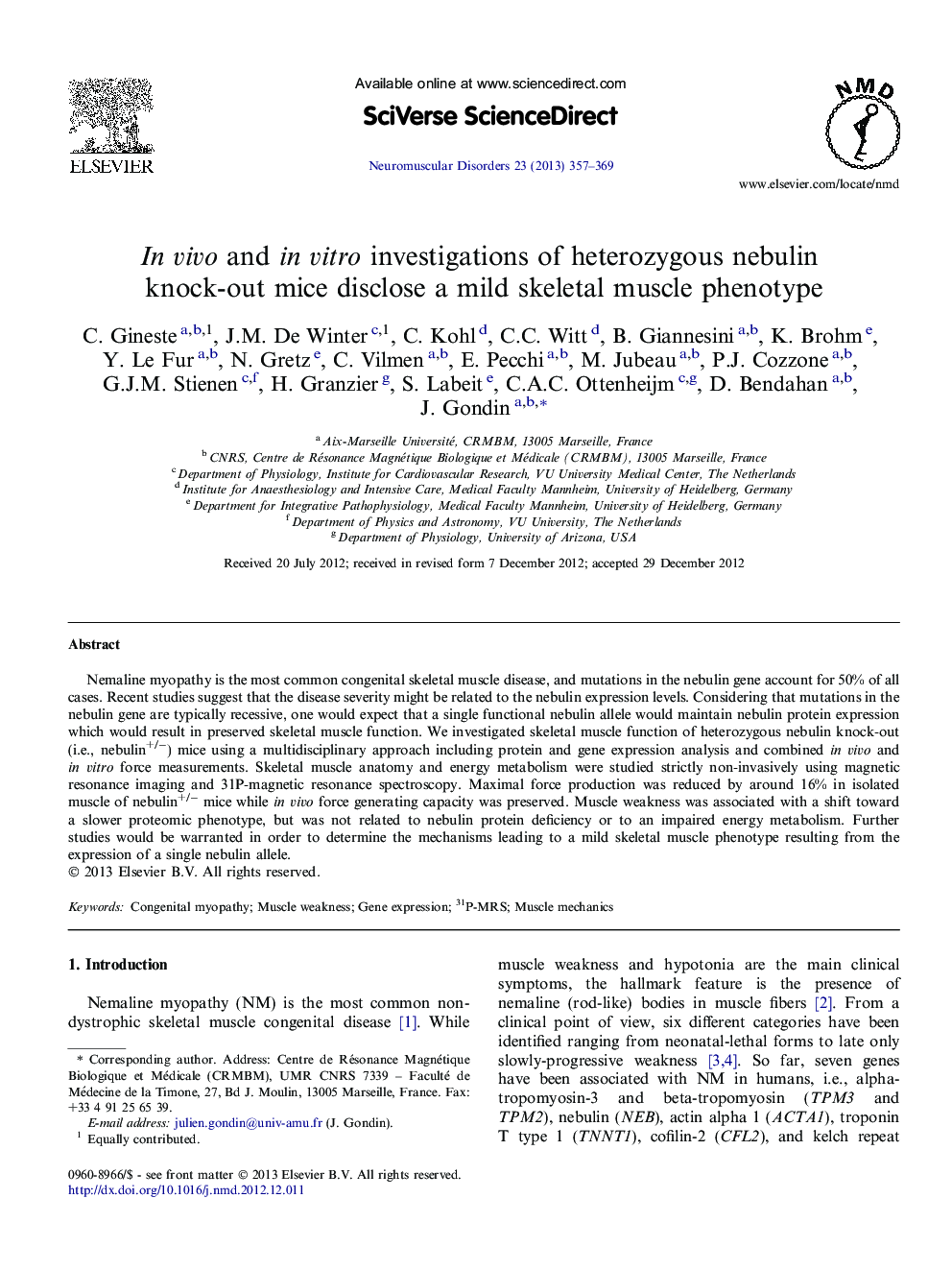| Article ID | Journal | Published Year | Pages | File Type |
|---|---|---|---|---|
| 6041847 | Neuromuscular Disorders | 2013 | 13 Pages |
Abstract
Nemaline myopathy is the most common congenital skeletal muscle disease, and mutations in the nebulin gene account for 50% of all cases. Recent studies suggest that the disease severity might be related to the nebulin expression levels. Considering that mutations in the nebulin gene are typically recessive, one would expect that a single functional nebulin allele would maintain nebulin protein expression which would result in preserved skeletal muscle function. We investigated skeletal muscle function of heterozygous nebulin knock-out (i.e., nebulin+/â) mice using a multidisciplinary approach including protein and gene expression analysis and combined in vivo and in vitro force measurements. Skeletal muscle anatomy and energy metabolism were studied strictly non-invasively using magnetic resonance imaging and 31P-magnetic resonance spectroscopy. Maximal force production was reduced by around 16% in isolated muscle of nebulin+/â mice while in vivo force generating capacity was preserved. Muscle weakness was associated with a shift toward a slower proteomic phenotype, but was not related to nebulin protein deficiency or to an impaired energy metabolism. Further studies would be warranted in order to determine the mechanisms leading to a mild skeletal muscle phenotype resulting from the expression of a single nebulin allele.
Related Topics
Life Sciences
Neuroscience
Developmental Neuroscience
Authors
C. Gineste, J.M. De Winter, C. Kohl, C.C. Witt, B. Giannesini, K. Brohm, Y. Le Fur, N. Gretz, C. Vilmen, E. Pecchi, M. Jubeau, P.J. Cozzone, G.J.M. Stienen, H. Granzier, S. Labeit, C.A.C. Ottenheijm, D. Bendahan, J. Gondin,
